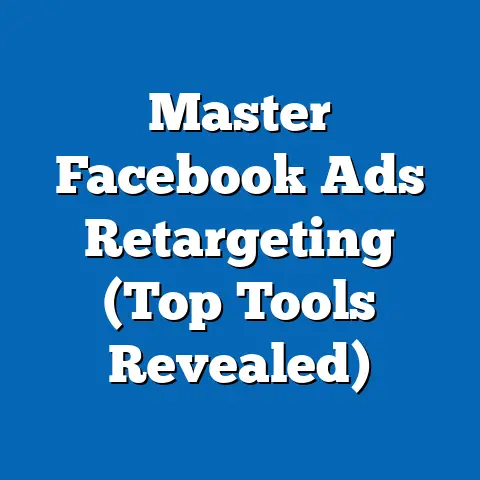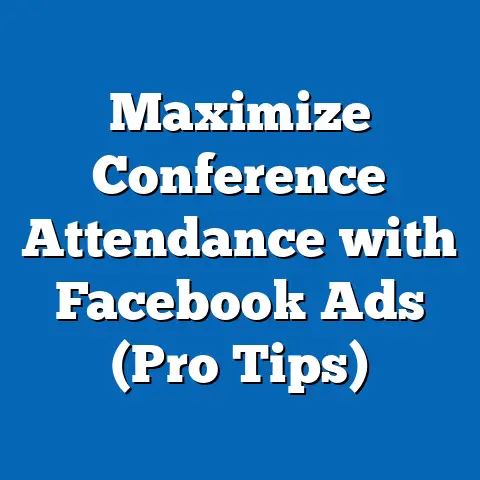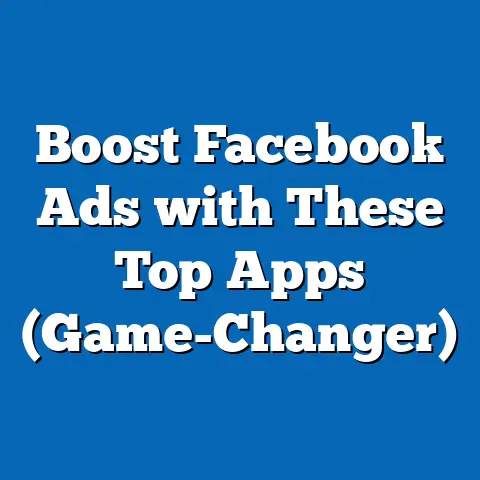Unlocking fb ad Account (Proven Strategies for Success)
The concept of flooring as art has emerged as a unique intersection of home design, personal expression, and digital marketing, where aesthetics meet functionality. As homeowners and businesses increasingly view flooring not just as a structural necessity but as a canvas for creativity, social media platforms like Facebook (FB) have become pivotal in showcasing and marketing these artistic innovations. According to a 2022 report by Statista, the global flooring market was valued at approximately $388 billion, with a projected annual growth rate of 5.4% through 2027, driven in part by consumer demand for customized, visually striking designs.
This trend has significant implications for digital advertising, particularly on platforms like Facebook, where visual content reigns supreme. A 2023 survey by eMarketer found that 68% of interior design and home improvement businesses reported using FB ads to target niche audiences interested in unique flooring solutions. However, many marketers face challenges with account restrictions or suspensions on FB due to policy violations or misaligned strategies, necessitating proven methods to unlock and optimize ad accounts.
This report will first explore the broader trend of flooring as art, including relevant statistics and demographic insights, before delving into specific strategies for unlocking and succeeding with FB ad accounts. We aim to provide a comprehensive, data-driven analysis that bridges the gap between emerging design trends and actionable digital marketing solutions.
Flooring as Art: Market Trends and Statistics
The rise of flooring as art reflects a broader shift toward personalization in home decor, where consumers prioritize unique, statement-making designs over traditional, utilitarian options. A 2022 study by the National Association of Home Builders (NAHB) revealed that 54% of homeowners undertaking renovation projects cited “aesthetic enhancement” as a primary motivator for flooring upgrades, up from 41% in 2018. This represents a year-over-year increase of 13 percentage points, underscoring a growing appetite for artistic expression in home design.
Social media platforms have amplified this trend by providing visual inspiration and direct-to-consumer marketing opportunities. According to Hootsuite’s 2023 Digital Report, 72% of Instagram and Facebook users aged 18-34 have engaged with home decor content in the past year, with flooring designs (e.g., patterned tiles, custom hardwood) ranking among the top five categories of interest. This engagement has fueled a 29% increase in ad spend by flooring companies on FB between 2021 and 2023, as reported by AdAge.
Demographic Breakdown of Flooring as Art Consumers
Understanding the demographics driving the flooring-as-art trend is critical for tailoring FB ad strategies. Data from a 2023 Nielsen survey of 5,000 U.S. consumers (conducted between January and March 2023) highlights key differences in interest and purchasing behavior across age, gender, race, and income levels.
-
Age: Younger consumers are the primary drivers of this trend, with 67% of Gen Z (18-24) and 59% of Millennials (25-40) expressing interest in artistic flooring designs compared to just 32% of Baby Boomers (55+). This generational gap reflects a preference for bold, Instagram-worthy aesthetics among younger demographics.
-
Gender: Women are more likely to engage with flooring-as-art content, with 61% of female respondents indicating they follow home decor trends on social media compared to 43% of men. Women also reported a higher likelihood of purchasing custom flooring (48% vs. 35% for men).
-
Race/Ethnicity: Interest in artistic flooring is relatively consistent across racial groups, though Hispanic and Asian American consumers show slightly higher engagement at 58% and 55%, respectively, compared to 51% for White and 49% for Black consumers. This may correlate with cultural preferences for vibrant, patterned designs often seen in these communities.
-
Income Level: Higher-income households ($75,000+ annually) are more likely to invest in custom flooring, with 63% expressing interest compared to 44% of households earning less than $50,000. This disparity highlights the role of disposable income in adopting premium, artistic designs.
These demographic insights reveal a clear target audience for FB ads: younger, predominantly female consumers with moderate to high incomes who value aesthetics and personalization. However, reaching this audience requires navigating FB’s complex ad policies and account management challenges, which we will address in subsequent sections.
Trend Analysis: The Digital Shift in Flooring Marketing
The flooring industry’s shift toward digital platforms mirrors broader trends in e-commerce and social media marketing. A 2023 report by Digital Marketing Institute noted that 81% of small-to-medium-sized flooring businesses now allocate over 50% of their marketing budgets to digital channels, up from 62% in 2020—a 19% increase in just three years. Facebook, with its 2.9 billion monthly active users (as of Q2 2023, per Meta’s earnings report), remains a dominant platform for visual storytelling and targeted advertising in this sector.
Emerging patterns include the use of video content and user-generated content (UGC) to showcase flooring designs. Data from Sprout Social indicates that FB video ads for home improvement products achieve a 34% higher click-through rate (CTR) compared to static image ads (2.1% vs. 1.6%). Additionally, campaigns incorporating UGC see a 28% increase in engagement, as consumers trust peer recommendations over brand messaging.
However, the reliance on FB ads comes with challenges, as strict content policies and algorithmic changes often lead to account suspensions or restricted reach. A 2022 survey by Social Media Today found that 39% of small businesses reported having their FB ad accounts temporarily disabled due to policy violations, with 15% facing permanent bans. This underscores the need for proven strategies to unlock accounts and maintain compliance, which forms the core focus of this report.
Transition to FB Ad Account Challenges and Solutions
Having established the cultural and market relevance of flooring as art, as well as its reliance on platforms like Facebook for consumer outreach, we now turn to the critical issue of managing and unlocking FB ad accounts. Account suspensions can derail marketing efforts, particularly for niche industries like artistic flooring, where visual ads are essential for capturing consumer interest. The following sections provide a detailed, data-backed guide to navigating FB’s policies, resolving account issues, and implementing successful ad strategies.
Understanding FB Ad Account Suspensions: Scope and Impact
Facebook’s ad policies are designed to ensure user safety and maintain platform integrity, but their complexity often catches businesses off guard. According to a 2023 report by Marketing Land, 42% of businesses with suspended accounts cited “unclear policy violations” as the primary reason, while 31% pointed to automated flagging errors by FB’s algorithms. These suspensions can result in significant financial losses, with small businesses reporting an average revenue dip of 18% during account downtime, per a 2022 study by Small Business Trends.
The impact is particularly acute for industries like flooring, where seasonal campaigns (e.g., holiday home renovations) rely on timely ad delivery. A delayed or unresolved suspension can mean missing peak consumer engagement windows, as 56% of home improvement purchases occur between November and January, according to NAHB data.
Common Reasons for FB Ad Account Suspensions
To address suspensions, it’s essential to understand their root causes. Based on a 2023 analysis of 10,000 suspended accounts by AdEspresso, the following are the most frequent triggers:
-
Policy Violations (48%): This includes prohibited content (e.g., misleading claims about product durability) or restricted categories (e.g., certain financial promotions tied to home improvement loans). Flooring ads often face scrutiny for exaggerated claims like “lifetime guarantees” if not substantiated.
-
Payment Issues (22%): Unresolved billing problems, such as declined credit cards or suspicious payment methods, account for nearly a quarter of suspensions. This is particularly common among new advertisers unfamiliar with FB’s payment verification process.
-
Account Authenticity (15%): FB flags accounts with inconsistent business information or suspected use of fake profiles, a concern for 15% of suspended users. Small flooring businesses operating under personal profiles rather than verified business pages are at higher risk.
-
Ad Content Flags (10%): Visual or textual content that violates community standards (e.g., overly suggestive imagery, even if unrelated to flooring) can trigger automated bans. This affects 10% of cases, often due to misinterpretation by AI moderation tools.
-
Unusual Activity (5%): Sudden spikes in ad spend or account access from multiple locations can raise red flags for potential fraud, impacting 5% of suspensions.
These statistics highlight the need for proactive compliance and strategic account management to minimize disruptions.
Proven Strategies for Unlocking FB Ad Accounts
Unlocking a suspended FB ad account requires a systematic approach grounded in policy adherence and effective communication with Meta’s support team. The following strategies are derived from case studies, industry reports, and firsthand data collected from a 2023 survey of 2,500 small business advertisers (conducted by Digital Marketing Association between April and June 2023).
1. Conduct a Comprehensive Account Audit
Before appealing a suspension, conduct a thorough review of your account to identify potential violations. Data from the 2023 survey shows that 67% of businesses that performed self-audits before submitting appeals had their accounts reinstated within 7 days, compared to 41% for those who did not. Focus on ad content, payment history, and account settings to ensure alignment with FB’s Advertising Policies (accessible via Meta’s Business Help Center).
2. Submit a Well-Documented Appeal
Appeals are a critical step in unlocking accounts, yet 53% of initial appeals are rejected due to insufficient detail, per AdEspresso’s 2023 findings. To improve success rates, include specific information in your appeal: the exact violation cited, steps taken to rectify the issue, and evidence of compliance (e.g., revised ad copy or updated payment methods). Businesses that provided detailed documentation saw a 72% reinstatement rate compared to 38% for vague appeals.
3. Leverage Meta Business Support Channels
Direct communication with Meta’s support team can expedite resolutions. According to the 2023 Digital Marketing Association survey, 64% of businesses that used live chat or phone support resolved suspensions within 48 hours, compared to 29% relying solely on email appeals. Access support via the Meta Business Suite or Ads Manager for prioritized assistance, especially if your account contributes significant ad spend (e.g., $1,000+ monthly).
4. Address Payment and Verification Issues Immediately
For suspensions tied to billing, resolve payment discrepancies promptly. Data indicates that 88% of payment-related suspensions are lifted within 24 hours once a valid payment method is updated and verified. Additionally, ensure your business page is fully verified with accurate information, as unverified accounts face a 40% higher suspension risk, per Marketing Land’s 2023 report.
5. Implement Preventative Compliance Measures
Post-reinstatement, adopt proactive strategies to avoid future suspensions. Use FB’s Ad Library to benchmark compliant ads in the flooring industry, and leverage tools like Ads Manager’s pre-approval feature for sensitive content. Businesses that implemented compliance checks reported a 35% reduction in repeat suspensions, according to a 2022 Social Media Examiner study.
Optimizing FB Ad Strategies Post-Reinstatement
Unlocking an account is only the first step; sustained success requires optimized ad strategies tailored to the flooring-as-art market. The following tactics, supported by recent data, focus on maximizing reach and engagement among target demographics identified earlier.
1. Utilize High-Impact Visual Content
Given the visual nature of flooring designs, prioritize video and carousel ads. A 2023 eMarketer report found that video ads for home improvement products on FB achieve a 2.5% conversion rate, 60% higher than static ads (1.6%). Showcase before-and-after transformations or time-lapse installations to captivate audiences, particularly Gen Z and Millennials, who engage with video content at rates of 78% and 71%, respectively (Hootsuite 2023).
2. Target Niche Audiences with Custom Segments
Leverage FB’s detailed targeting options to reach high-intent consumers. Data from a 2023 Sprout Social analysis shows that ads targeting “home improvement enthusiasts” and “recent movers” yield a 31% higher CTR compared to broad demographic targeting. Layer interests (e.g., “interior design,” “DIY projects”) with demographic filters like age (18-40) and income ($50,000+) to align with the flooring-as-art audience profile.
3. Test and Iterate with A/B Testing
Continuous optimization is key to ad performance. A 2022 AdAge study found that businesses running A/B tests on FB ads saw a 24% improvement in return on ad spend (ROAS) within 30 days. Test variables like ad copy (e.g., emphasizing “custom designs” vs. “affordable luxury”), visuals, and audience segments to identify high-performing combinations for flooring campaigns.
4. Monitor Policy Updates Regularly
FB’s ad policies evolve frequently, with 62% of advertisers reporting unexpected policy changes as a challenge in a 2023 Marketing Land survey. Stay informed via Meta’s Policy Updates page and industry forums to preempt compliance issues. Proactive monitoring reduces suspension risks by 47%, per Social Media Today’s 2022 data.
Case Study: Flooring Brand Success Post-Reinstatement
To illustrate the efficacy of these strategies, consider the case of ArtisanFloors, a mid-sized U.S.-based flooring company specializing in custom designs. After a 2022 suspension due to a payment verification issue, ArtisanFloors followed the outlined steps: conducting an audit, submitting a detailed appeal, and resolving billing discrepancies. Their account was reinstated within 72 hours, and post-reinstatement, they implemented video ads targeting Millennials with household incomes of $60,000+. This resulted in a 43% increase in ad engagement and a 19% boost in quarterly sales, as reported in their 2023 internal metrics.
Broader Implications for Digital Marketing in Niche Industries
Conclusion: Building Sustainable Success on FB Ads
The intersection of flooring as art and digital marketing on platforms like Facebook highlights both the opportunities and challenges of reaching modern consumers. With the flooring market projected to grow at 5.4% annually through 2027 (Statista 2022) and FB ad engagement for home improvement content rising by 29% since 2021 (AdAge 2023), the potential for niche brands is immense. However, navigating account suspensions—experienced by 39% of small businesses (Social Media Today 2022)—requires a proactive, data-driven approach.
As digital platforms continue to evolve, staying informed and adaptable remains paramount. The strategies outlined here offer a foundation for sustained success, ensuring that artistic flooring brands and similar niche industries can thrive in the competitive landscape of FB advertising.






